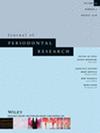Comparison of different methods used in the classification of maxillary gingival phenotype: A diagnostic accuracy study
Abstract
Aims
This study aimed to evaluate the reliability and applicability of novel methods for determining gingival phenotypes and compare them with currently recommended methods.
Methods
Six maxillary anterior teeth from 50 systemically and periodontally healthy patients were evaluated using two conventional methods (periodontal probe translucency method [PP] and transgingival measurement with an endodontic file [EF]), and two novel methods (colored biotype probe translucency method [CBP] and transgingival measurement with a Florida probe [FP]). All data were statistically analyzed. Intra-examiner reproducibility and inter-examiner reproducibility for all methods were analyzed using 10 randomly selected patients who were re-evaluated for each analysis.
Results
Moderate agreement was found between EF and PP, with statistically significant differences between median gingival thickness (GT) values for thick 0.8 mm (0.5–1.1 mm) and thin 1 mm (0.6–1.7 mm) phenotypes, and a threshold GT value of ≤0.92 mm (p < .001). FP and PP also showed moderate agreement, with statistically significant differences between median GT values for thick and thin phenotypes (0.80 mm [0.40–1.60 mm] and 0.89 mm [0.40–1.60 mm], respectively), and a threshold GT value of ≤0.8 mm (p < .001). PP and CBP values showed a substantial agreement (p < .001). A statistically significant difference was found between median EF values and CBP categories (p < .001); however, paired comparisons showed that the distinction was applicable only between thin and other phenotypes.
Conclusion
Although CBP was found to be successful in detecting the thin phenotype, it was not successful in distinguishing between medium, thick, and very thick phenotypes; moreover, it did not appear to offer any advantages over PP. Although FP may be preferable to EF in measuring gingival thickness, the cost of FP is a disadvantage.


 求助内容:
求助内容: 应助结果提醒方式:
应助结果提醒方式:


